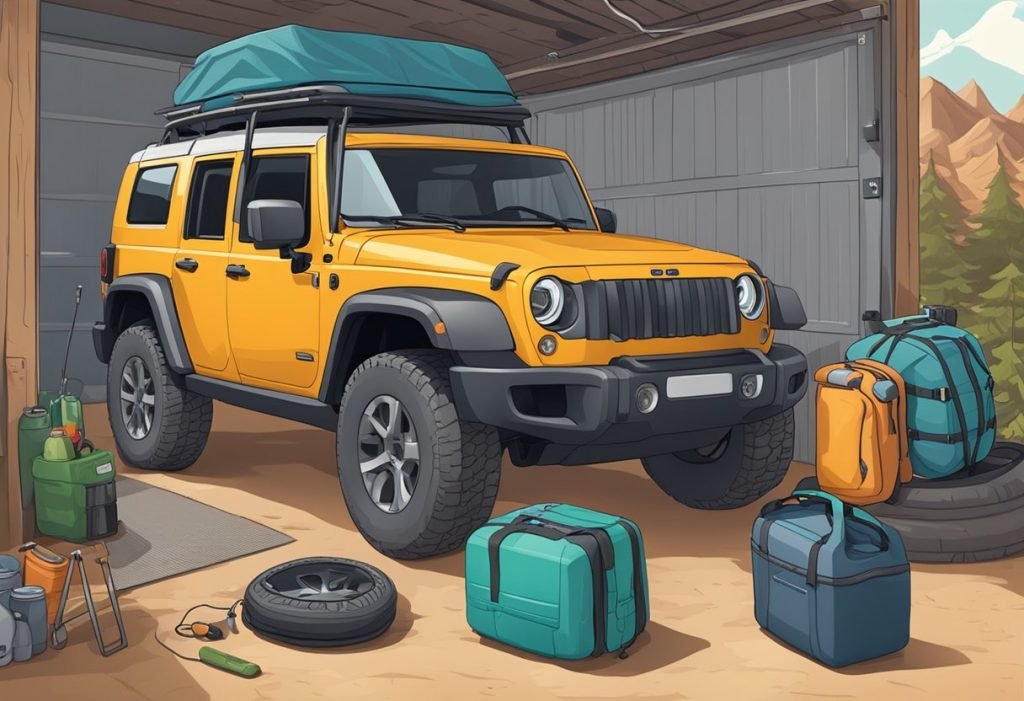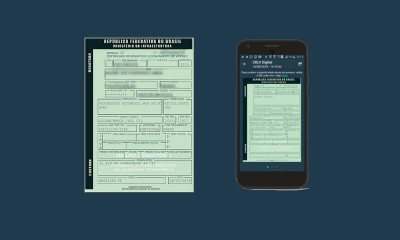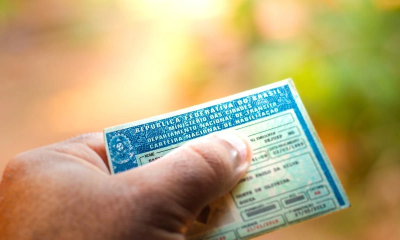How to Prepare Your Car for an Off-Road Adventure
Off-road trips can be a thrilling adventure, but they require a lot of preparation, especially when it comes to your vehicle. Preparing your car for an off-road trip is crucial to ensure a safe and enjoyable experience. In this article, we will provide some tips on how to get your car ready for an off-road adventure.

Before hitting the road, it’s important to plan your trip. This includes selecting the right route, checking the weather forecast, and making sure you have all the necessary permits and equipment. It’s also important to inform someone of your travel plans, in case of an emergency. Once you have your trip planned out, it’s time to focus on your vehicle.
Off-road driving can be tough on your car, so it’s essential to make sure it’s in good condition before the journey. This includes checking the brakes, suspension, and tires. It’s also important to ensure that your car has enough ground clearance and that all the necessary fluids are topped up. By taking the time to prepare your vehicle, you can help prevent breakdowns and ensure a smooth and enjoyable off-road trip.
Vehicle Inspection and Service
Before embarking on an off-road trip, it is crucial to ensure that your vehicle is in good condition. This is not only important for your safety but also for the longevity of your car. In this section, we will cover the essential aspects of vehicle inspection and service that you need to consider before hitting the dirt roads.
Engine and Fluids Check
The engine is the heart of your vehicle, and it is essential to ensure that it is in good condition before heading out. Check the oil, brake fluid, coolant, and other fluids to ensure that they are at the recommended levels. Also, inspect the air filters and hoses for any signs of wear and tear, and replace them if necessary. Look for any signs of leaks under the vehicle and address them before they become a problem.
Brakes and Tires Assessment
The brakes and tires are critical components of your vehicle, and they play a vital role in ensuring your safety. Check the brake pads, rotors, and brake fluid to ensure that they are in good condition. Also, inspect the tires for any signs of wear and tear, and check the tread depth to ensure that they have enough grip on the road. If the tires are worn out, replace them with new ones. Don’t forget to check the spare tire to ensure that it is in good condition.
Lights and Electrical Systems
Before heading out, check all the lights on your vehicle, including the headlights, taillights, brake lights, and turn signals. Ensure that they are all working correctly and replace any faulty bulbs. Also, check the battery to ensure that it is fully charged and in good condition. Inspect the electrical systems, including the alternator and starter, to ensure that they are functioning correctly.
In conclusion, a vehicle inspection and service are crucial before embarking on an off-road trip. Regular vehicle maintenance is essential to ensure that your vehicle is in good condition and to prevent any breakdowns on the road. By following the tips in this section, you can ensure that your vehicle is ready for any off-road adventure.
Packing the Essentials
When going on an off-road trip, it’s important to pack the essentials to ensure a safe and enjoyable journey. Here are some of the essential items that should be packed before hitting the road.
Safety and Emergency Gear
Safety and emergency gear should be the top priority when packing for an off-road trip. A first-aid kit is a must-have item and should contain all the necessary items such as bandages, antiseptic wipes, and pain relievers. An emergency kit that includes jumper cables, a shovel, and a flashlight should also be packed in case of an emergency.
Navigation and Communication Tools
Navigation and communication tools are also essential when going on an off-road trip. A GPS device or maps can help you navigate through unfamiliar terrain. In addition, a communication device such as a two-way radio or satellite phone can be used to call for help in case of an emergency.
Food, Clothing, and Shelter
Food, clothing, and shelter are also important items to pack when going on an off-road trip. Non-perishable food items such as energy bars and canned goods should be packed to ensure that you have enough food during the trip. Warm clothes and blankets should also be packed to keep you warm during cold nights. A tent or a camping hammock can be used as shelter during the trip.
By packing these essential items, you can ensure a safe and enjoyable off-road trip.
Off-Road Vehicle Upgrades
When preparing for an off-road trip, upgrading your vehicle is essential to ensure a safe and enjoyable adventure. Here are some upgrades to consider:
Tires and Suspension
Off-roading requires all-terrain tires that can handle rough and uneven terrain. Upgrading to larger tires with deeper treads can improve traction and stability. Additionally, a suspension lift kit can provide more ground clearance, allowing your vehicle to navigate over larger obstacles.
Protective Equipment and Recovery Gear
Protecting your vehicle is crucial when off-roading. Installing skid plates, rock sliders, and bumpers can help prevent damage to the undercarriage and body. Recovery gear such as a snatch strap and an air compressor can be lifesavers in case of a stuck or deflated tire. It is also important to carry a first aid kit and a fire extinguisher in case of emergencies.
Remember to always prioritize safety and consider the type of off-roading you will be doing when selecting upgrades for your vehicle.
Planning Your Route
One of the most important aspects of preparing for an off-road trip is planning your route. You need to have a clear idea of where you are going and how you are going to get there. This will help you avoid getting lost or stuck in a difficult situation.
The first step in planning your route is to determine your destination. This could be a specific location or a general area that you want to explore. Once you have decided on your destination, you can start looking at the different routes that you can take to get there.
Consider the weather conditions when planning your route. If you are traveling during the rainy season, you may want to avoid routes that are prone to flooding. Similarly, if you are traveling during the winter months, you may want to avoid routes that are likely to be covered in snow and ice.
It is also important to have a detailed itinerary. This should include information about where you will be staying each night, as well as any planned stops along the way. Having a clear itinerary will help you stay on track and ensure that you have enough time to see everything that you want to see.
Make sure to bring along a good map or GPS system. This will help you navigate your way through unfamiliar territory and avoid getting lost. It is also a good idea to have a backup plan in case your primary navigation system fails.
Overall, taking the time to plan your route carefully is essential for a successful off-road trip. By considering your destination, weather conditions, itinerary, and navigation tools, you can ensure that you have a safe and enjoyable adventure.
Frequently Asked Questions
What items should I include in my off-road trip car checklist?
When preparing for an off-road trip, it’s essential to have a checklist of items to ensure you’re fully equipped. Some of the must-have items include a spare tire, jack, tire pressure gauge, first aid kit, fire extinguisher, tow rope, and recovery gear. Additionally, you should carry enough food, water, and emergency supplies to last you through the trip.
How do I ensure my vehicle’s reliability for a rugged terrain adventure?
Before embarking on an off-road trip, it’s crucial to ensure your vehicle is in good condition. You should start by checking the oil levels, brakes, and battery. It would be best to have a professional mechanic inspect your vehicle for any underlying issues that may affect its reliability.
What are the critical maintenance checks before embarking on an off-road journey?
To ensure your vehicle is ready for an off-road adventure, you should check the air filter, transmission, differential, and transfer case fluids. Additionally, you should inspect the suspension, steering, and brakes for any signs of wear and tear. It would be best to have a professional mechanic perform these checks to ensure your vehicle is in good condition.
How can I modify my car to enhance its off-road capabilities?
There are several modifications you can make to your vehicle to enhance its off-road capabilities. Some popular options include installing a lift kit, adding larger tires, and upgrading the suspension. Additionally, you can modify the drivetrain, install a winch, and add skid plates to protect the undercarriage.
What safety precautions are necessary for a vehicle before an off-road excursion?
Before embarking on an off-road excursion, it’s crucial to ensure your vehicle is equipped with essential safety features such as seat belts, airbags, and roll bars. Additionally, you should have a fire extinguisher, first aid kit, and emergency supplies on hand. It’s also essential to inform someone of your travel plans and carry a communication device such as a satellite phone or two-way radio.
How do I assess my car’s suspension and tire suitability for off-road conditions?
To assess your car’s suspension and tire suitability for off-road conditions, you should inspect the shocks, struts, and springs for any signs of wear and tear. Additionally, you should check the tire pressure and tread depth to ensure they’re suitable for off-road conditions. It’s crucial to have a professional mechanic inspect your vehicle to ensure it’s ready for an off-road adventure.
-

 Trânsito2 years ago
Trânsito2 years agoMudança ou Adição de Categoria da CNH: Como Fazer e Quais os Requisitos
-

 Trânsito2 years ago
Trânsito2 years agoCadastro de Instrutor de Trânsito: Como Fazer a Inscrição ou Renovação
-

 Trânsito2 years ago
Trânsito2 years agoCNH Digital: Como Funciona e Quais os Benefícios para os Motoristas
-

 Trânsito2 years ago
Trânsito2 years agoCertidão de Prontuário: Tudo sobre a Documentação do Condutor
-

 Trânsito2 years ago
Trânsito2 years agoAlteração de Dados Cadastrais: Como Atualizar as Informações do Veículo ou do Condutor
-

 Trânsito2 years ago
Trânsito2 years agoTransferência de Veículo: Como Fazer o Registro em Outro Estado ou Município
-

 Trânsito2 years ago
Trânsito2 years agoPerda ou Roubo da CNH: Como Solicitar a 2ª Via pelo Site do DETRAN
-

 Trânsito2 years ago
Trânsito2 years agoCRLV Eletrônico: A Nova Era da Documentação Veicular
